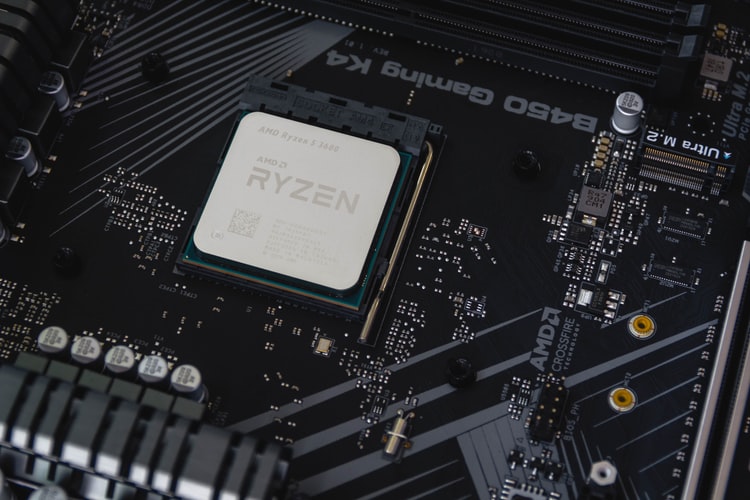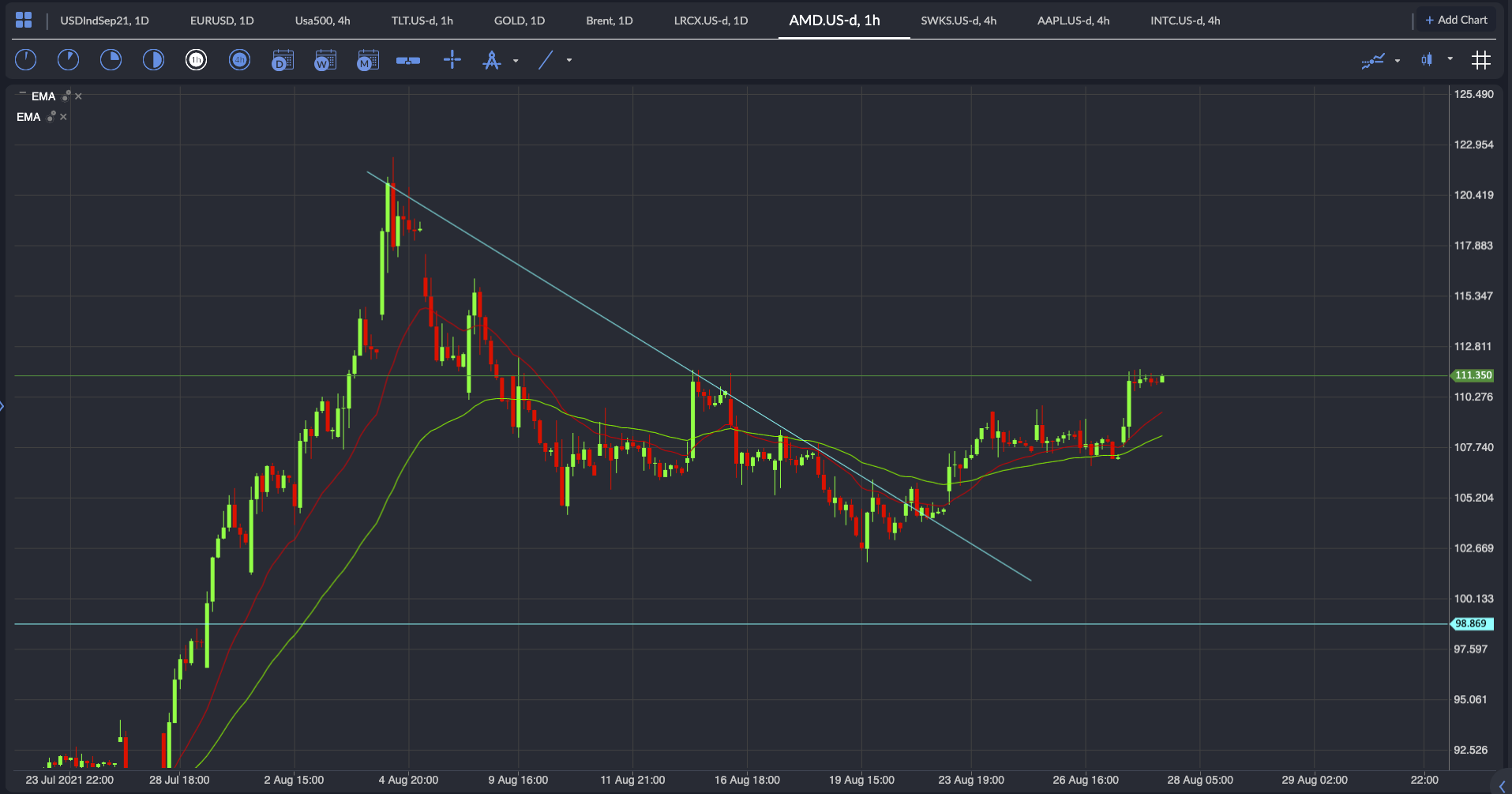Weekly Investing Idea
There is one thing that you can rely on when trading or investing. Greater demand in a market with limited supply will result in higher prices in that market. The last 15 months has seen a fundamental shift in the way that we work, with a lot more people as well as companies agreeing that working from home maybe a viable option. Along with the pandemic induced changes to our way of life, we also have the ‘Internet of Things’ (IoT), the electronification and automation of everything, as well as Moore’s law, which are in aggerate making the demand for semi-conductors increase beyond the available supply.
Market equilibrium is the function of a market where demand and supply tend to move toward the equilibrium price. The price where everyone agrees value is found. Humans love a bargain, but at certain times they are willing to pay above the previous accepted prices as their need for something outstrips their willingness to wait for a discount.
There are also times when fear matches greed as we witnessed during March 2020 when the shelves of shops were stripped bare of the basic requirements let alone laptops and webcams.
This hasn’t necessarily happened before in the semiconductor market, as the buyers of semiconductors generally don’t hoard, but when there is a global disruption, larger players did increase their inventories, which raised the price and priced out smaller companies. The problems have all been though a lack of supply due to increased demand and because factories making chips had to close. Now shipping is more expensive so getting raw materials in is more expensive and making chips is more costly. This will be self-correcting as the more someone needs something made, the more likely a company will expand production to meet the demand, we just need COVID to disappear or be managed with the vaccines and for disruptions in supply chains to ease.
The above chart shows how even as demand has increased over the years the prices of the semiconductors and electronic components has decreased. The inflation of volume in something makes it less expensive (deflationary), which is why you can buy a 50” TV for a few hundred pounds today, whereas in 1999, it would have costs thousands. The technology advances have just made certain things more abundant and easier to manufacturer.
The concept of the ‘Internet of Things’ (IoT) through Smart Devices has been around since the early 1980’s, but according to Cisco Systems it birthed between 2008 and 2009. If you walk into any house with an internet connection and tally up the number of things that can connect to the internet, it would be a growing number year-on-year. Everything from the front door security system to the environmental monitoring devices, to what’s in your fridge, can be wired or WI-Fi’d to the rest of the world. The smart phone in your hand can in theory control every aspect of your daily life if someone has made an App for it.
Because we are becoming more reliant on the mobile devices, Apple have even decided to take matters in their own hands and develop their own chips rather than relying on 3rd party vendors. The iPhone sales would be severely dented if they are unable to keep supplies of chips coming and that would be bad for investors, the tech industry as a whole and investors in the stock markets.
When we hear news that Ford, and Toyota are halting production lines due to the supply disruptions in semiconductors it is even more obvious that everything is becoming reliant on these small computer chips. The Federal Reserve have been critiqued recently for not doing more to combat rising inflation but to them the transitory nature of things like second-hand car prices will eventually resolve itself when the supply disruptions ease and demand is met.
With the demand for tech advances being governed by Moore’s Law, which is used in the semiconductor industry to guide long-term planning for research and development targets, the increase of micro-chips in devices is growing along with the capabilities of the chips. At some point the required number of processors, sensors, pixels, and memory will flatten off as efficiency and power constraints due to physics of materials will occur, but the world we live in clearly will need semiconductor technologies for generations to come.
The U.S. alone accounted for nearly half of the $420 billion in global semiconductor spending in 2020 and the ongoing development race between America, China and S.Korea will keep pushing the development of faster and more powerful chip sets.
For the majority of August and culminating last Friday the markets had been anticipating other news surrounding global macro monetary policy. Regardless of the demand and supply dynamics of the semiconductor industry there is another layer to investing and one which is impacted by things like monetary policy, interest rates and yields. The cost of developing new technologies along with increasing manufacturing costs to meet demand are a massive capital expenditure for technology companies. So investors also need to consider how inflation, tax and interest on debt will affect the bottom line of a high growth company, which is where last Fridays speech by Fed Chair Powell comes into play.
The result of the Jackson Hole symposium address by Chair Powell was that the Fed will not be adjusting their policy yet, so no rate hikes and no tightening of monetary policy. The Nasdaq, S&P500, Dow Jones Industrial Average and Russel 2000 ended the week at or near all-time highs, with the small cap index of the Russel 2000 and the Tech based index of the Nasdaq rallying into the close on Friday.
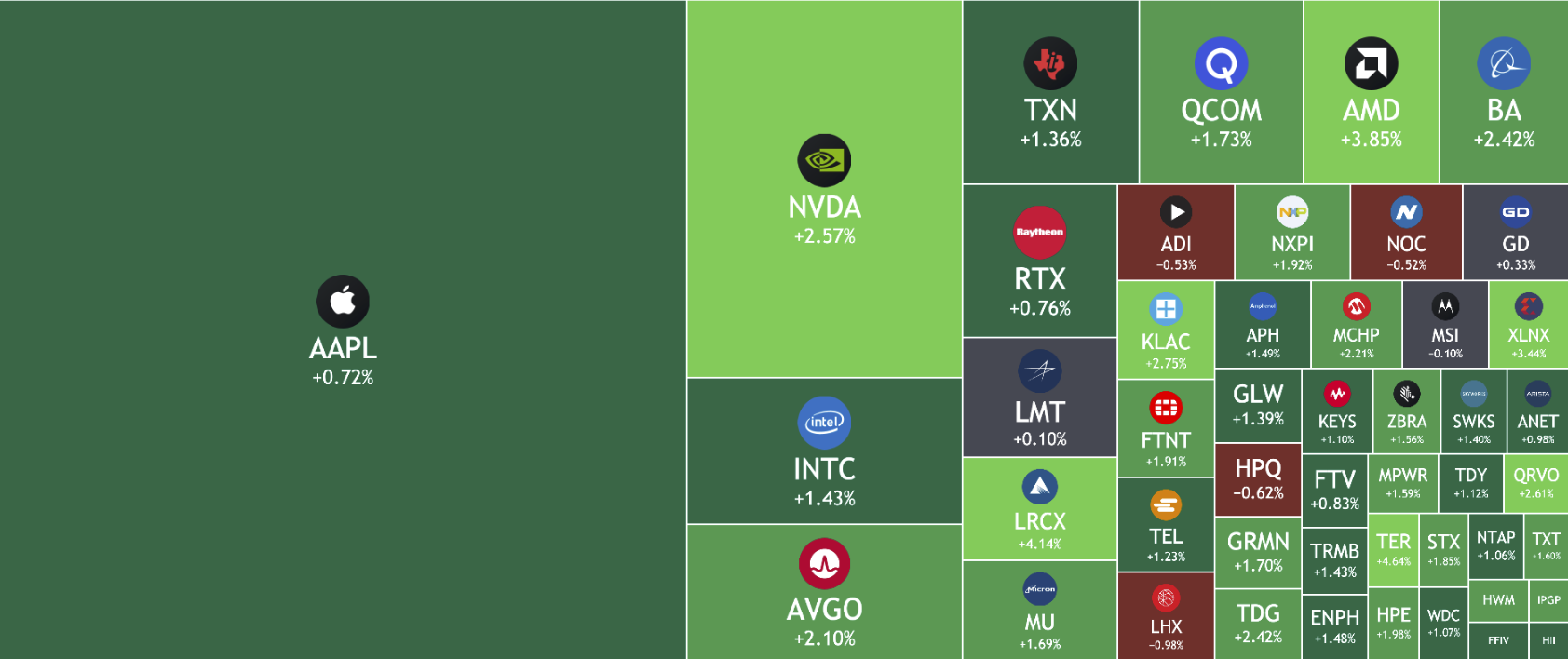

The S&P500 is made up of different sectors but one standout winning sector within the 500 companies was the electronic tech cohort. When this section is green the Nasdaq Index is doing very well.
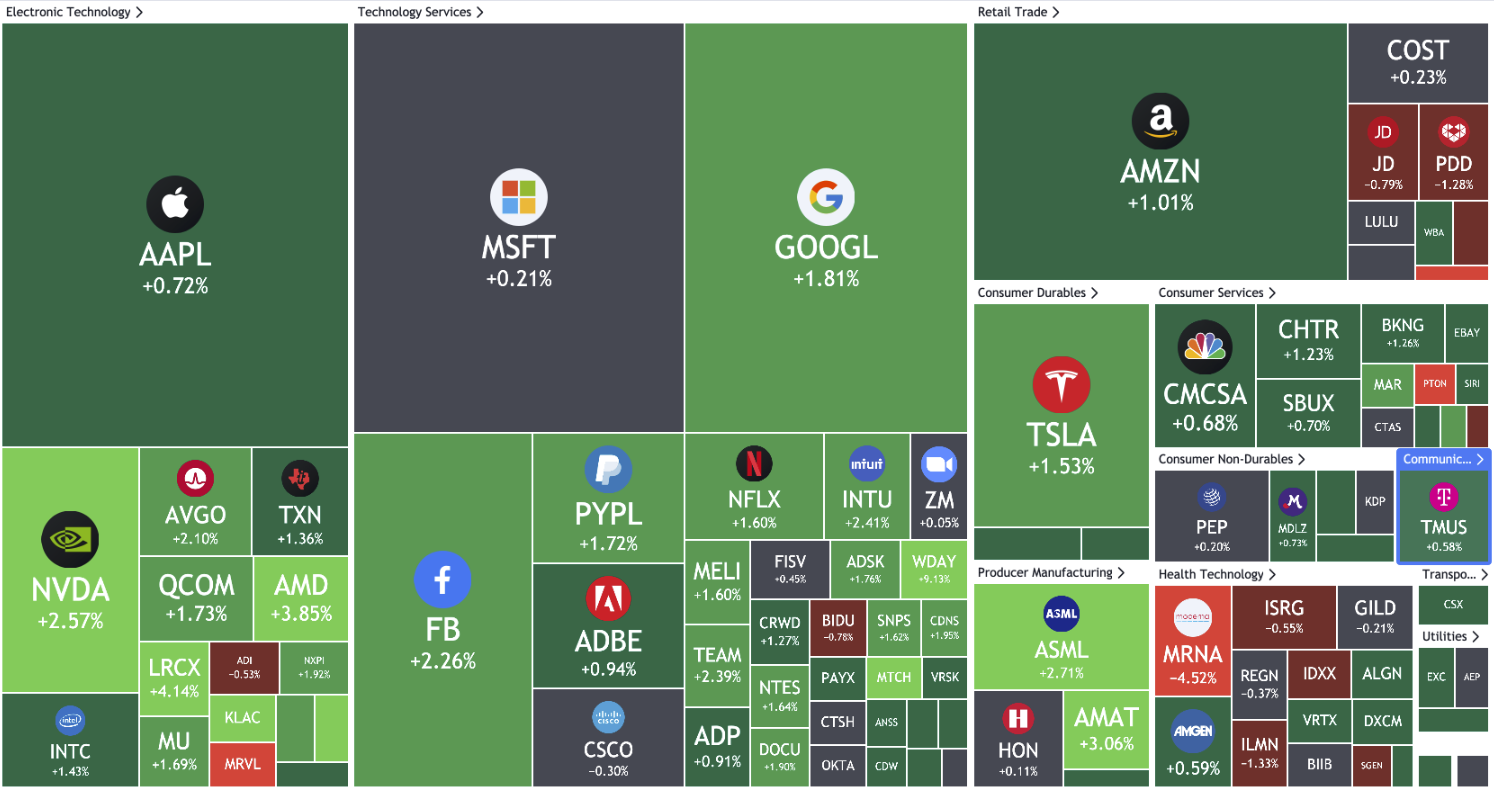

Looking at the Nasdaq’s closing prices on Friday the brightest group in my opinion were the company tickers associated with semi-conductors, like NVDA, AMD and INTC. This is a key signal for where I think gains will be made on the back of what is happening in the world and because of the no-change in monetary policy of the world’s largest economy. Yet!
NVIDIA is the largest company in the semi-conductor quadrant by market cap and ended Friday up by 2.57%, bigger gains came in from AMD and LRCX.
NVIDIA is the industry’s leading GPU maker, it is also earning higher-than-average profit margins and using that money to invest in product R&D. The reinvestment will keep them leading the rest of the pack. Crypto miners had been keeping the demand high for GPU’s which is what NVIDIA started out designing. Today, NVIDIA are among the leaders not only in GPUs for high-end computers but software and cloud computing.
NVIDIA made a $40 billion acquisition of chip design licensor ARM Holdings which will expand their presence within the mobile chip industry.
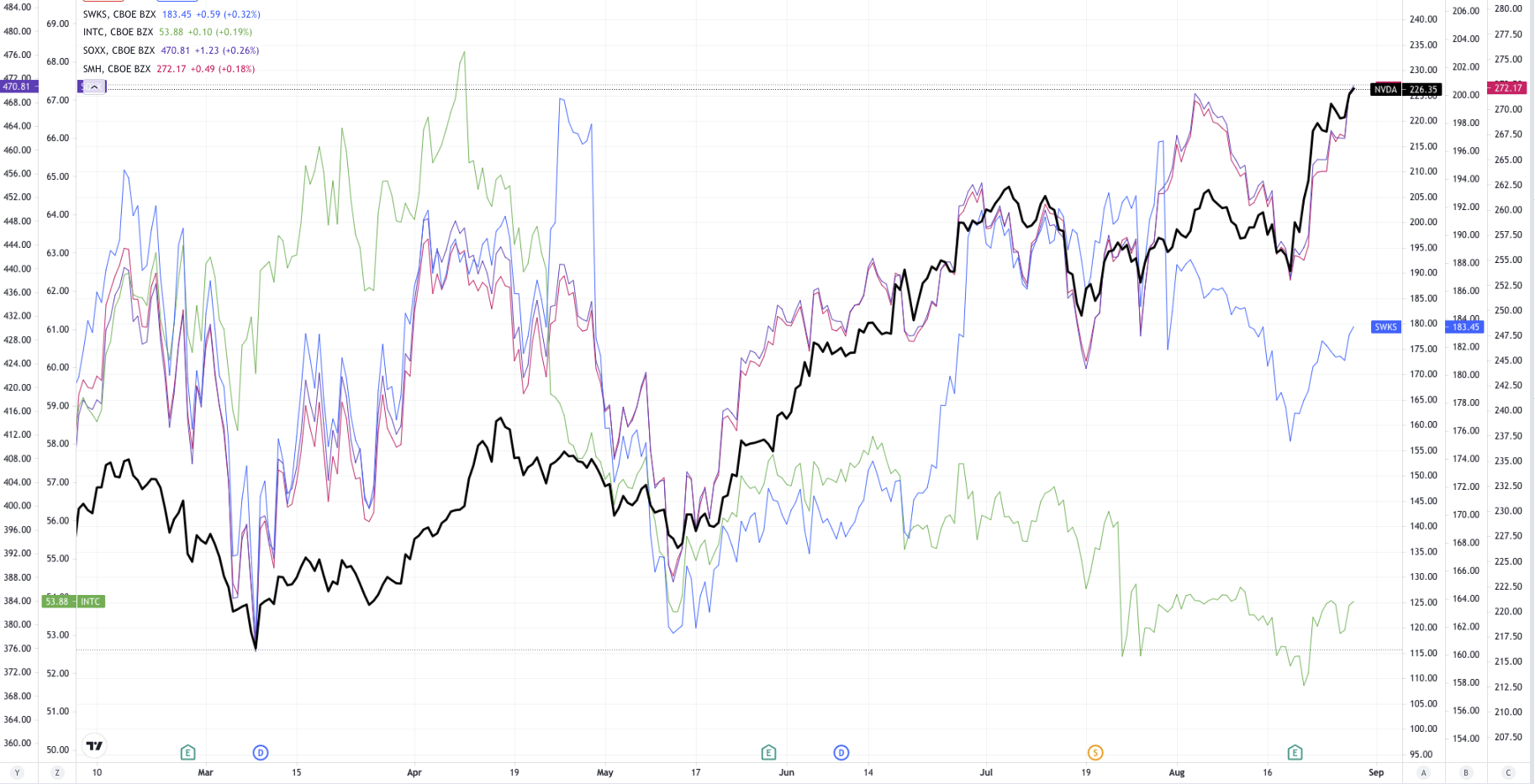

The dark black line on the above chart is for NVIDIA and it is showing a relatively smooth move higher along with some ETFs in the semiconductor sector.
See real-time quotes provided by our partner.
Advanced Micro Devices, Inc. (AMD) is also a major player in the semiconductor business. It delivers components for computing & graphics as well as for enterprise. Their product line is found in desktop computing and notebook processors and chipsets, integrated graphics processing units, data centre and professional GPUs and development services.
AMD recently broke out of a long period of consolidation and looks set to travel back to recent highs. It would be great to see it retest the breakout level from a risk perspective, as you can place your Stop Loss closer to your entry. The momentum in the stock though could be too great and the bulls may accelerate this higher now.
See real-time quotes provided by our partner.
On an intraday chart, following the higher time frame momentum to the upside and using the 20 and 50 period exponential moving averages as support, the h1 pullback into the dynamic support of the ema’s could be a great way to get in on a trade. Placing the SL under a recent swing low and trailing along with the 50-period ema.
Other ways to invest in the semiconductor tech industry is to purchase an Exchange Traded Fund (ETF) such as iShares Semiconductor ETF (NASDAQ: SOXX): This ETF contains 30 chip companies. Or the VanEck Vectors Semiconductor ETF (NASDAQ: SMH): This fund owns 25 stocks, encompassing semiconductor chip companies from around the globe. These ETF’s are great ways to buy into the whole market rather than be reliant on the earnings of just one company, who may fall foul or out of favour of a major tech company.
